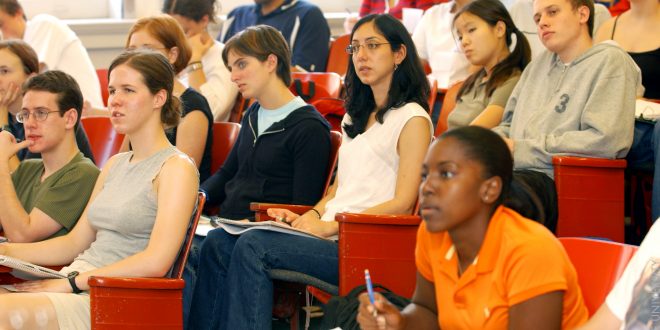By Peter Li
Hi, I’m Peter Li, and I study at a high school in the United States. I would like to share my experience and thoughts on the differences between the Chinese and the American K-12 education systems. In the past 15 years, I’ve attended many different schools, including schools in both China and the United States. I studied in China all the way from kindergarten to 5th grade, then I moved to Irvine for 6th and 7th grade. Due to my parents’ career relocation, my family and I had to move back to China during my 8th grade; and now I’m a freshman at Saratoga High School in Northern California. The differences that stand out to me the most are in testing, socialization, individualized thinking, and hands-on learning.
First of all, even though testing plays an important role in both education systems, there is a difference in how testing is used for college admissions in the two systems. In the United States, the grade point average is more important than certain test scores. However, there is no such thing as grade point average in most Chinese schools. Grades for the whole school year are determined by the semester finals scores. Most Chinese people have a misconception that SAT or ACT is as important as the Chinese “Gaokao”, which is a Chinese standardized test that is required of high schoolers to be admitted into higher education. These test scores are considered supplementary to grade point average, and their importance is far less than that of the grade point average.
Now let’s move on to the differences in classrooms. In the United States, students go to different teachers’ classrooms for different classes. Making friends in schools in the US oftentimes takes place outside the classroom. Students may choose whom they want to make friends with and their friends don’t need to be in the same class. For example, students at my school chat and discuss with their friends at the library. Whereas in China, students are stationed in their homeroom, and different teachers come to the same class. Students in China study and sit with the same classmates every day in class. Students in the same class become friends naturally without any pressure because their friends are, in a way, chosen for them. Students in the same class have a closer bond with their classmates because they are familiar with whoever sits next to them.
In regards to individualized thinking, the two education systems are at odds with each other. Students in the United States are given more freedom in thinking differently whereas students in China are taught to memorize the correct answers to questions. In the US, students are encouraged to think critically and to question their teachers. In my math class, a boy told our math teacher that the teacher got the answer wrong. Indeed, the teacher got the answer wrong and didn’t get upset because the student challenged her authority. In contrast, students in China are taught to obey their teachers and not to question their teachers at all times. For instance, one of my friends in my Chinese middle school asked our teacher one question about a piece of history and was told that there could only be one interpretation. The teacher was a little bit upset because someone dared to challenge him. The whole class was a bit shocked when they heard that there was only one right answer to the question. Students in the United States are given more freedom in class to elaborate on thinking whereas students in China apply their knowledge to questions.
Lastly, learning activities are also very different between the two systems. In the United States, students have more in-class activities where they interact with each other because they are encouraged to learn things from actions. It is more important for students in the United States to learn things through hands-on activities rather than simply getting good scores. For example, we do a lot of labs in Biology class in the United States, such as pig dissection. In China, there are only a few hands-on activities in the whole school year, and students learn things mostly from reading books. It is more important to score high on the exams than to really understand the concept through concrete activities. For instance, in my Chinese middle school, we did Biology workbooks every day instead of hands-on activities.
In conclusion, education between the two countries are quite different, and the major differences are testing, socialization, individualized thinking, and hands-on learning. Hopefully, in the future, the two systems can learn more from each other and improve themselves.
 Tempus Magazine By Students, For Students
Tempus Magazine By Students, For Students 



